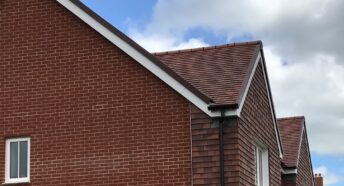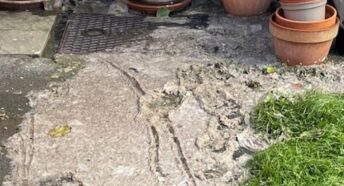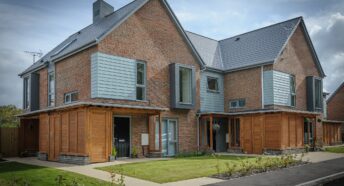Our trees need more protection
Mature oak trees have been felled along a 300 metres stretch of the Burgess Hill to Haywards Heath road (Isaacs Lane). They were of high ecological value and an integral part of an ancient woodland landscape.
Development pressure in the Burgess Hill Northern Arc area has resulted in a massive amount of tree felling but the trees on Isaacs Lane, like many others in the area, were not protected by law.
Due to many previous impending development warnings for this area, action had been taken many years before to protect individual clusters of woodland in the countryside of an adjoining parish to the west of Burgess Hill and eight tree preservation orders had been applied by Mid Sussex District Council. Many other trees in areas surrounding the Northern Arc are still vulnerable however and lack any protection.
In 2004 a local community group, called The Woodland, Flora & Fauna Group, undertook a biodiversity study of the countryside to the west of Burgess Hill and up to Ansty in the north. The study, which took several years to complete, identified remnants of the historic landscape with ancient woodland indicator species including wild service trees, orchids and butcher’s broom in clear evidence. This pattern of landscape replicated similar features found in Bedeland’s Nature Reserve to the north-east of Burgess Hill and indicated a probable continuous historic ancient woodland landscape feature stretching from Hickstead in the west to Bedeland’s Nature Reserve in the east and up to the border of Ansty in the north.
Homes England is responsible for the removal of the 50- to 100-year-old oak trees along Isaacs Lane.
They recognised the value of the oak trees and tried to minimise felling, but the planning system allowed felling and replacement by saplings. By including biodiversity net gain measures in Home England’s planning permission, Mid Sussex District Council sought to compensate for the loss of the oak trees. (Although, it is not clear whether revising the route of the link road for the housing development could have prevented felling of the trees). Biodiversity net gain is an approach which aims to leave the natural environment in a measurably better state than beforehand. The replacement saplings will, however, need decades of growth to replace the biodiversity value of the felled trees. Saplings will not be sufficient to allow wildlife to remain and survive in the area.
Homes England has assured CPRE Sussex that they will exceed the overall biodiversity net gain requirement of 10% before the development is completed in 2045. Mid Sussex District Council should be requiring net gain progress checks from 2022 until 2045, as each development of 500 houses is completed. However, it will be many more years before replacement trees provide alternative homes for the displaced wildlife.
What can the local community do now?
First, put pressure on Mid Sussex District Council to place Tree Preservation Orders on remaining mature trees in the Burgess Hill Northern Arc area; and to protect the remnants of the historic landscape from development. Second, check that the District Council ensures delivery of the biodiversity net gain required by Homes England’s planning permission.
However, it’s also time to look at protection of mature trees and how biodiversity net gain is working.
CPRE Sussex believes that mature trees should have more protection. They should be valued as society’s natural capital, not seen as an obstacle to development. The value of a tree to the environment and society, including the cost of bringing it to maturity over its life span – over tens or hundreds of years – should be calculated. If for biodiversity net gain, developers had to replace trees or offset ecological damage based on realistic financial considerations, far fewer trees would be cut down. These are issues CPRE Sussex will be pursuing through the national CPRE, countryside charity





